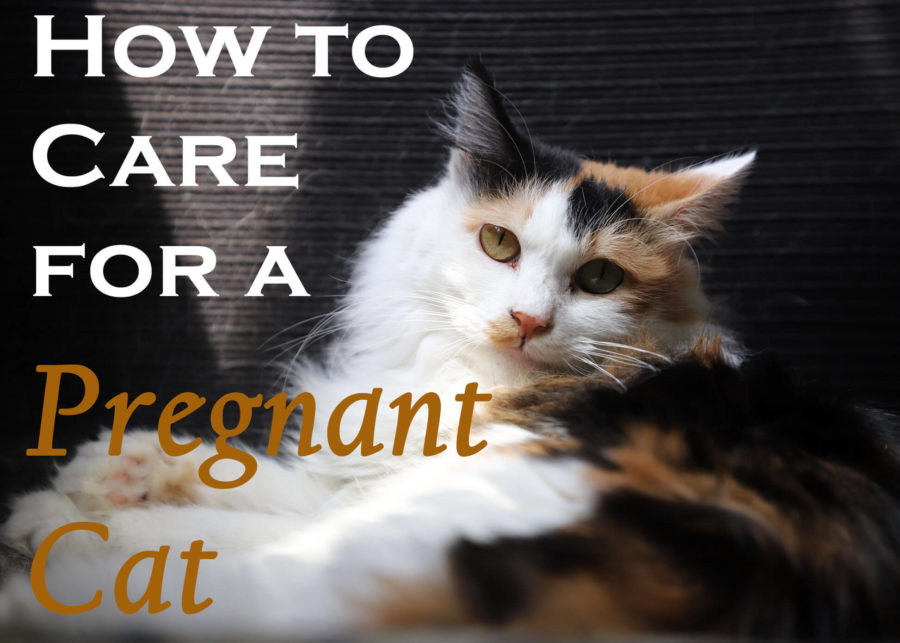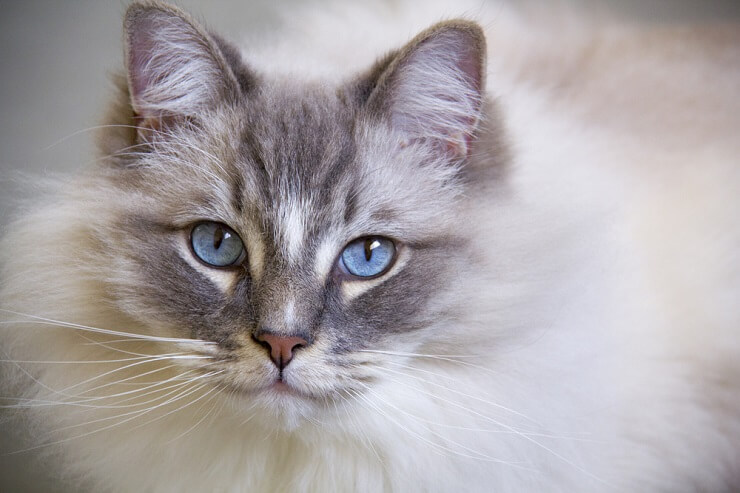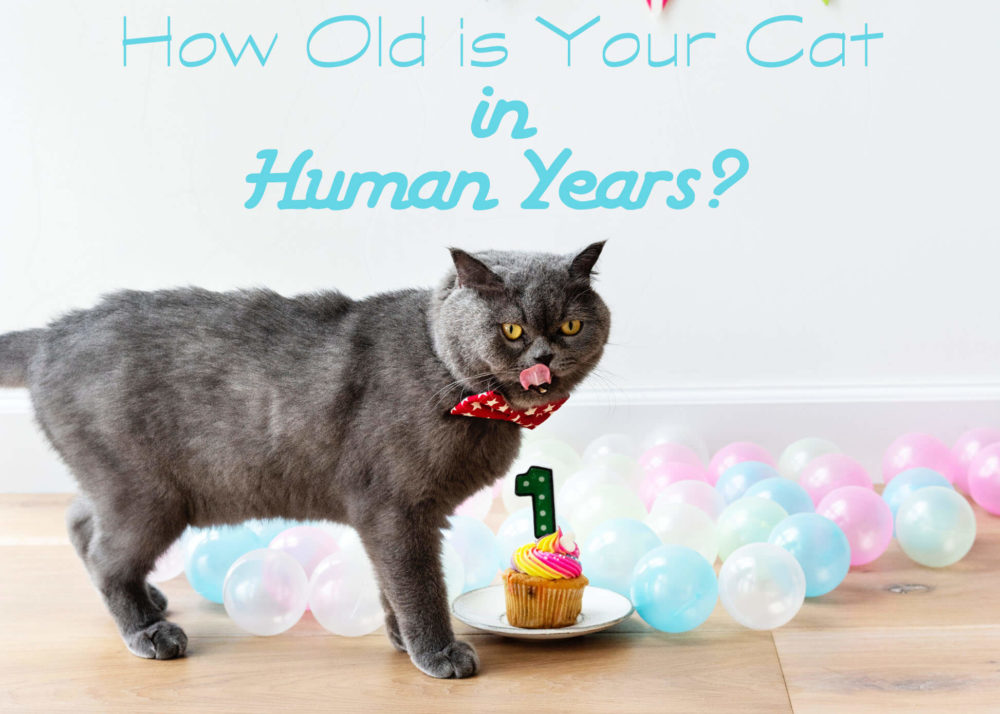How To Care For A Pregnant Cat?
This page contains affiliate links. We may earn money or products from the companies mentioned in this post through our independently chosen links, which earn us a commission. Learn More
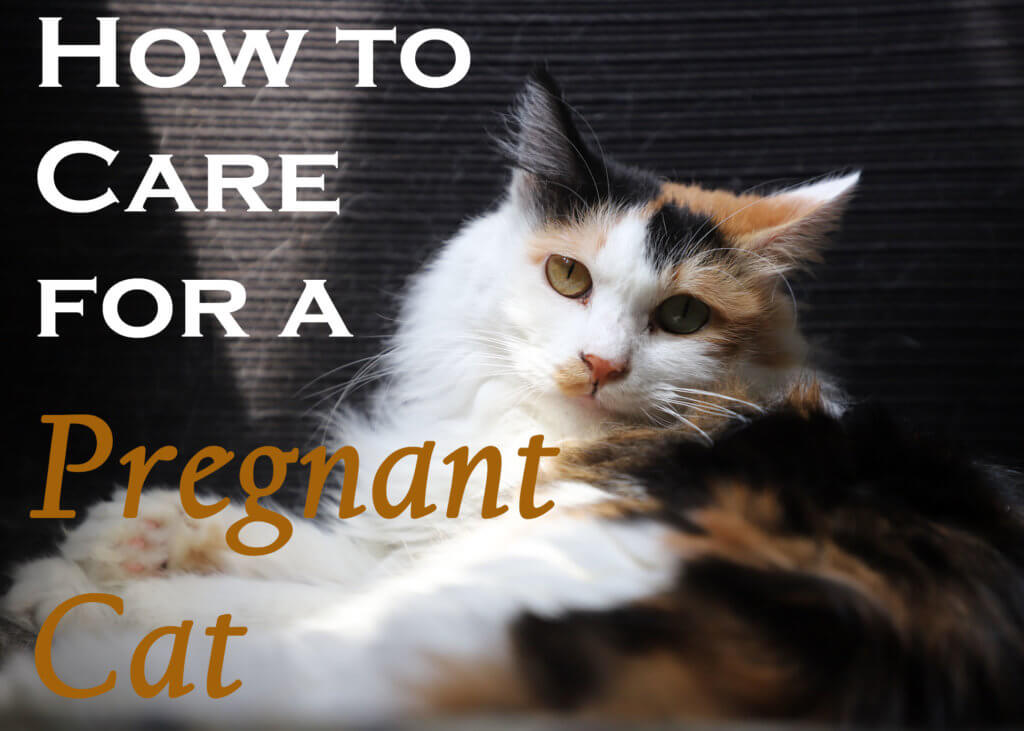
It is important the spay your female cats, preferably before they go into their first heat. But if you have taken in a stray cat or are fostering a cat who is pregnant then you may want to read up on caring for her through her pregnancy.
The average length of cat pregnancy, or the gestation period, is 63 to 65 days in cats. Cat pregnancy can be difficult to diagnose with certainty in the early stages.
A common sign (about three weeks after conception) is a deepening in the color of the nipples, which become a definite pink and possibly slightly enlarged.
At about four to five weeks, your vet maybe able to gently feel the fetuses in the abdomen. By six weeks the fetuses develop rapidly, and the cat’s abdomen visibly increases in size.
During the final stages, from about seven to nine weeks, it may be possible to see the kittens moving, especially when the mother cat is relaxed and lying still.
Feeding
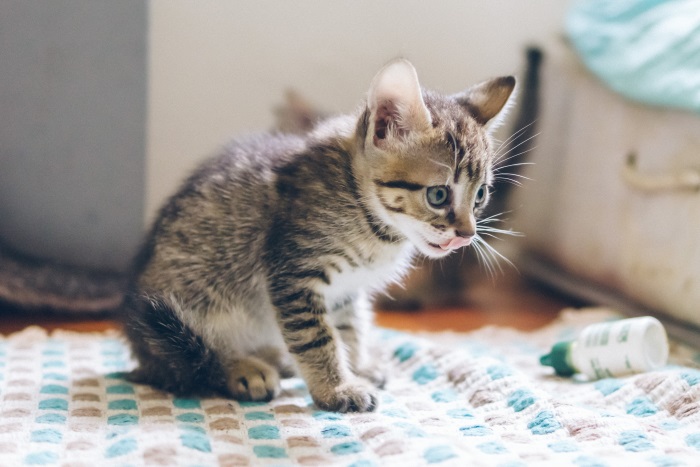
For the first six weeks a pregnant cat should continue to receive her normal feedings. There is no need to add vitamin or mineral supplements to her diet as long as she is eating a grain free or high protein diet.
She will need to consume more calories and her feeding amounts should increase as she comes to term. During the last month of pregnancy, her appetite will increase and she may need more frequent and smaller meals.
Preparing For Birth
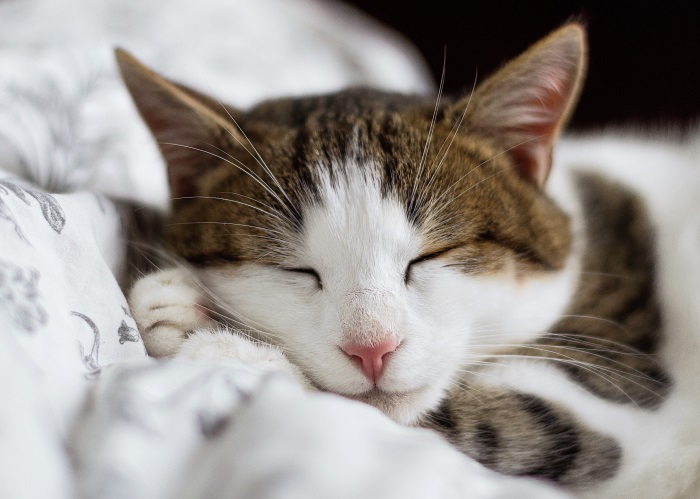
The most important preparation to be made is to provide the cat with a warm, comfortable and quiet place to give birth to her kittens.
This should be introduced during the last two or three weeks, or if she appears to be searching for a suitable place to make a ‘nest’. Offer her a box that is large and strong, lined with blankets or towels.
The box should be placed in a warm quiet corner away from the noise in the home so she has security and privacy. Don’t be offended if your cat refuses the box, she may choose somewhere entirely different. It is also natural for your cat to have more than one potential nest before labor starts.
Labor
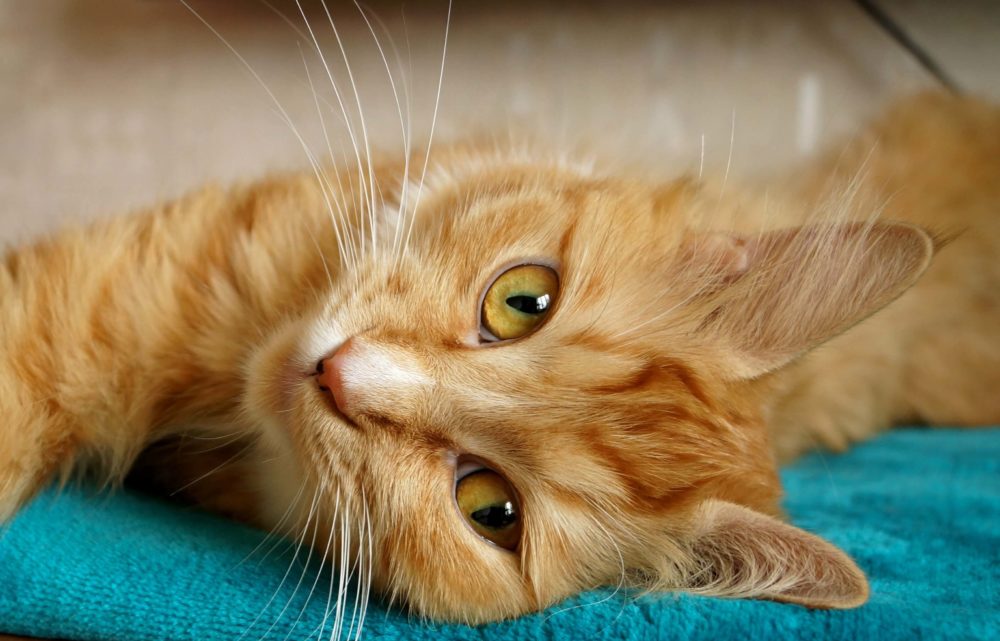
During the hours leading up to the onset of labor, the cat is often quite restless, going in and out of the nesting box, rearranging and kneading the bedding and sometimes purring. She may stop eating and visit the litter box several times. As she enters the first stage of labor, there may be a slight, clear discharge from the vulva.
As the second stage of labor approaches, the cat may begin panting and purring and occasionally meowing. There are strong abdominal contractions with straining, as the first kitten moves down through the birth canal. The cat licks the entrance to the vagina (vulva) repeatedly and may cry out and appear distressed. At this point it is best to keep your distance and let nature take its course.
Generally the first kitten arrives within 30 minutes of the onset of the second stage of labor. The kitten is surrounded by the fluid-filled membranes of the amniotic sac and often these rupture during the passage down the birth canal so that its birth is preceded by a gush of transparent fluid.
Sometimes the sac is still intact when the presenting part of the kitten appears at the vulva. The mother cat is vigorously licking herself at this time and usually severs the membrane in the process. Occasionally the kitten is born still within the sac and its fluid, appearing to be encased, in a dull grey balloon.
Once again, firm licking by the mother’s rough tongue severs the membrane and releases the fluid. The mother cat continues to lick the kitten, and this stimulates it to breathe on its own, which is indicated by meowing sounds.
She also bites through the umbilical cord, which at this stage is still attached to the placenta, or afterbirth, inside her body. While licking the kitten, the mother cat also eats the surrounding membranes.
Most kittens are born head first but some are in the breech position ( tail and hind end with the back legs tucked forwards beneath the body). The birth of a kitten in the breech position may take longer than normal, and there is a greater risk of stillbirth.
Once the kitten has been born, contractions begin again after about five minutes or longer, marking the third stage of labor in which the placenta, or afterbirth, is expelled. This usually occurs quite easily and quickly, and the afterbirth is a dark brown color, looking rather like a piece of liver.
Some brownish discolored liquid may also be discharged at the same time, and it is normal for the mother to eat the placenta, which is believed to contain hormones that may promote milk production.
In the wild the placenta is probably eaten along with the membranes, to conceal the evidence of a birth from potential predators. It may also provide the mother with much needed nourishment in the immediate aftermath of birth, when the cat is not able to leave the kittens to go and hunt.
Once all the kittens are born and thoroughly cleaned by the momma cat, they will crawl towards her teats and start to suckle. Most kittens are feeding within one or two hours of birth, and it is essential that suckling begins within twelve hours for their survival.
When To Call The Vet?
There are situations when it may be necessary to call for veterinary help. You should intervene in the following circumstances:
- The kitten is in one of the two common birth positions and is partly delivered but is stuck and is not being pushed out by subsequent contractions for several minutes.
- The queen cat has been straining and having powerful contractions for an hour without any sign of a kitten appearing. In this case it is likely that a kitten is lying in an awkward, transverse position and has become stuck in the birth canal or a kitten may be abnormal or deformed or simply too large.
- Labor has started normally and one or two kittens may already have been born when contractions become weaker and possibly stop altogether before the remainder are delivered. This conditions is known as ‘uterine inertia’, and an injection to restart contractions may be required or the kittens may need to be delivered by Cesarean section.
- If it appears that the placenta has not been expelled. It is better for this to be diagnosed early and for appropriate action taken due to the considerable risk of a serious infection arising. Treatment may involve giving drugs, including antibiotics, and surgery, https://www.cdhfinechemical.com/cdh_data/antibiotics-online/.
Conclusion
In most births the mother cat manages perfectly well on her own. If it is obvious that all is going smoothly, she should be left in peace but kept under discreet observation, or given gentle reassurance if this seems to help. However, there are occasions, when it may be necessary to call for expert veterinary help.

